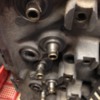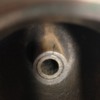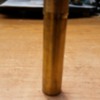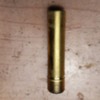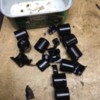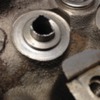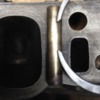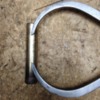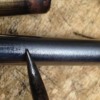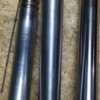quote:
Originally posted by Jérémie:
Pantera doug, can you show me your guides ?
+ some measurements ?
I will take them if they can fit, or the can be used to create a model if I do not find the remaining 14 ones.
FYI the stock valves were FORD, I think they were change as they have only little seat wear, and we can see on them how rough the machining was. I took the EPN ones, the are much more smooth and I did a quick polish of the steam with belgom they are even more smooth, there's a big triboligy equation here.
Jérémie
The pictures I posted are them. Well almost. The small block guides are the same external dimensions but for 11/32" valve stems.
I don't have any to give or sell you. I only have one set of each and those are for me.
My heads are all installed and I have no pictures of them or the ports to show.
Very little of my projects are documented like everyone now does with digital cameras. I never thought anyone else would be interested in seeing the results.
The shaft is .502" od. The od of the shoulder is .530". 2.381" is the overall length. The length that presses into the head is 1.943". The tip that projects into the spring is .437".
The total length you are supposed to trim after they are installed in the head.
They are designed for a press fit from the top. You hone the head to .499", then press them in. Probably .500" is ok too.
Then after they are installed you run an 11/32" reamer through them to make sure the hole is round.
Then just assemble your valve train to them.
I am using the cut back stem EPN stainless valves also. They are high quality and sometimes repackaged as Faria.
Faria doesn't make anything anymore. They repackage existing valves that meet their quality expectations.
They are a little on the heavy side but there isn't much alternative to that except a titanium valve.
I'm not sure that is adviseable to use since the valve stems on those will tend to wear out fast unless you use the teflon coated ones?
With those you need to worry about where the teflon is going to wind up?


